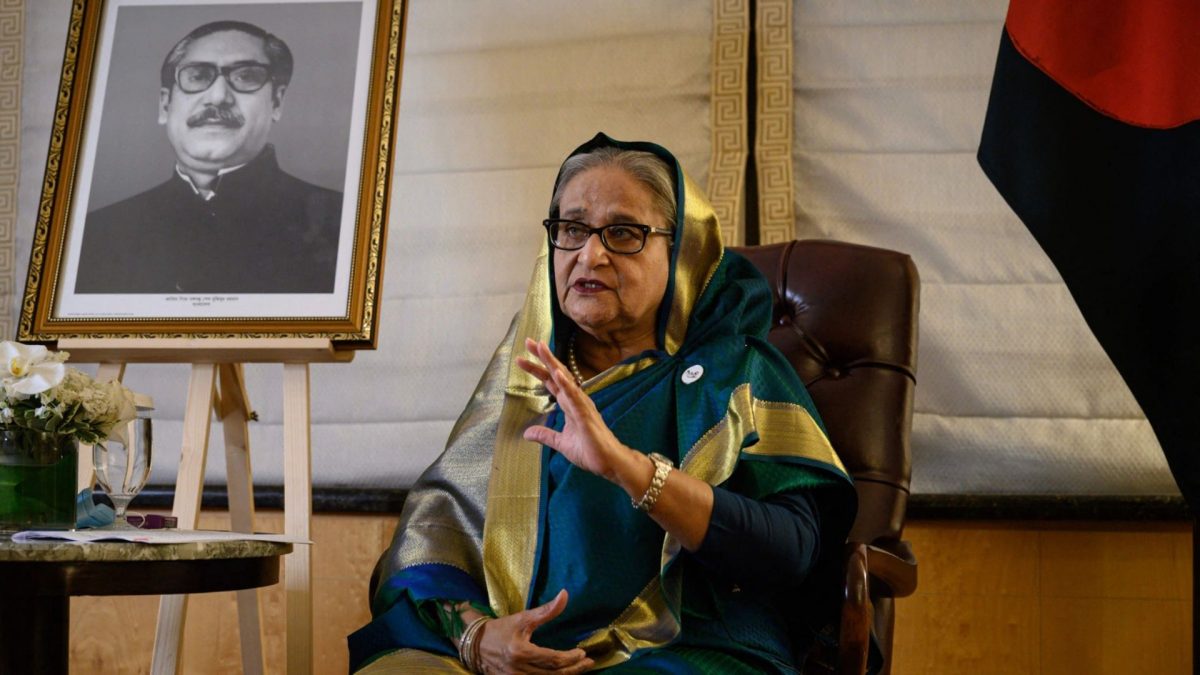On August 5 last year, Bangladesh found itself amidst a political storm as now-deposed prime minister Sheikh Hasina abruptly fled the country, leaving behind a nation teetering on the edge of chaos. Her departure paved the way for Dr Mohammad Yunus to helm a caretaker government, but the country still grapples with political instability.
Student-led protests
The spark for this storm was a student-led protest movement against a reinstated quota system, which had spiralled into widespread unrest.
Hasina, facing mounting pressure, reportedly planned to declare a state of emergency to restore order. A secret meeting with Awami League leaders had greenlit the plan, but she never made it to the President’s office to formalise it.
What unfolded instead was a dramatic unravelling of her government, marked by allegations of betrayal and external interference.
‘External interference’
Former State Minister Mahibul Hasan Choudhury pointed to an “institutional conspiracy backed by external forces,” claiming the Army Chief ignored Hasina’s directives, leaving her with no option but to step down.
The night before her departure, Hasina was scheduled to meet the President at 10 PM but was allegedly prevented from doing so.
With no mobilisation of party workers and no significant casualties reported, many within the Awami League began to suspect internal sabotage. One senior leader called it “100 per cent sabotage,” while others whispered of thwarted plans for a lockdown and an all-party government under emergency rule.
Tense final hours
The chief prosecutor of the International Crimes Tribunal, Mohammad Tajul Islam, offered a gripping account of the tense final hours of Hasina’s rule.
He described a “tense and volatile” meeting at Ganabhaban, the prime minister’s official residence, on the night of August 4. The room was filled with key ministers, ruling party stalwarts, and top military officials, all locked in heated discussions as protests engulfed the nation.
Between midnight and 12:15 AM on August 5, Major General (retd) Tarique Ahmed Siddique, Hasina’s then-defence adviser, reportedly suggested she resign—a proposal that infuriated the defiant leader.
Impact Shorts
More ShortsInstead, Hasina ordered the army chief to confront the protestors head-on. In a shocking revelation, Islam claimed Tarique even floated the idea of firing on the protestors, including the possibility of aerial attacks from helicopters. The Air Force chief, appalled, reportedly warned Hasina, “He (Tarique) has sunk you, and he will sink you again.”
By the morning of August 5, the situation had deteriorated further. In a critical meeting, IGP Chowdhury Abdullah Al-Mamun informed Hasina that security forces were running low on ammunition and could not hold back the surging protestors.
Top military officers renewed their demand for her resignation, met with Hasina’s fiery retort: “Then shoot me and bury me here, in Ganabhaban.”
Undeterred, the officers reportedly moved her to another room, warning that protestors were marching on Dhaka and Ganabhaban from all directions. Hasina’s sister, Sheikh Rehana, reportedly fell at her feet, begging her to step down, but the prime minister remained resolute.
The turning point came when Hasina’s son, Sajeeb Wazed Joy, was contacted.
According to Tajul Islam, it was Joy’s intervention that finally persuaded his mother to relinquish power. After a sleepless night of fraught meetings with the armed forces, Hasina resigned and fled the country by helicopter on the morning of August 5, as protests and military reluctance closed in around her.
One year later, with elections on the horizon and the Awami League still cornered, August 5 remains a bitter memory for party loyalists. For them, it symbolises a lost opportunity—a government toppled not by bullets, but by a confluence of protests, military defiance, and alleged betrayal from within.
)